To investigate the myth that the Biblical Flood account is on par with “other myths” from the Ancient Near East, we’ll look at the mechanism and process that best explains the Flood (Catastrophic Plate Tectonics, or “CPT”), the seaworthiness of the Ark (compared to the Ark from flood myths such as Gilgamesh), and answer common questions like “How could Noah fit all of the animals on the Ark?” and “How could all of the animals disperse around the world after the Flood?” We’ll conclude by overviewing some of the worldwide flood legends and evaluating whether Noah’s Flood was worldwide or local.
Catastrophic Plate Tectonics (“CPT”)
The Bible records that the Flood commenced by the “fountains of the great deep” breaking open. The Hebrew term used for this is bâqaʻ (pronounced “baw-kah”) which means to “cleave, rend, or break and rip open; to make a breach.” This “cleaving and breaking/ripping open” couldn’t describe what we see on the planet today any better.
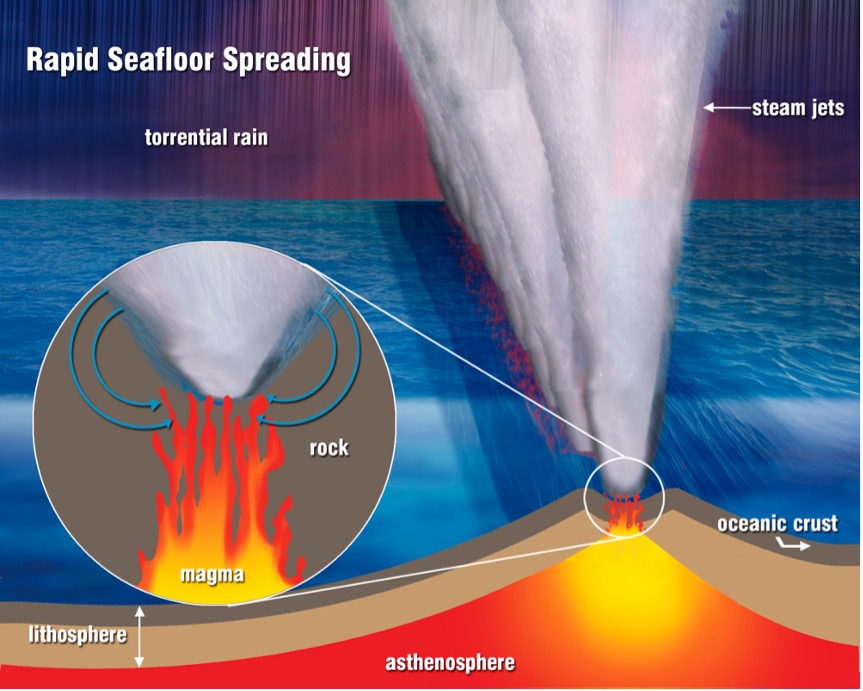
Figure 21. Fountains of the Great Deep Breaking Open (the Beginning of Noah’s Flood).[i]
In 1994 six PhD scientists published a research paper titled, “Catastrophic Plate Tectonics: A Global Flood Model of Earth History,”[ii] that substantiated this biblical aspect of the Flood. Their research revealed that fast-moving, subducting oceanic plates were responsible for the continents breaking apart and spreading to their current locations, in contrast to the evolutionary ideas of slow continental drift and equally slow seafloor spreading. Ongoing research in this area has shown that the model helps explain volcanoes, mountain ranges, the shapes and positions of continents, and the generation of global tsunamis that explain rock layers.
Genesis Apologetics worked with many of these leading Flood geologists to produce YouTube videos that visualize how CPT played such a large role in Noah’s Flood.[iii] Readers interested in a more technical explanation behind the catastrophic nature of the Flood are encouraged to view Dr. Steve Austin’s presentation titled, “Continental Sprint: A Global Flood Model for Earth History.”[iv]
Much of the fundamental research on the topic of CPT has been undertaken by Dr. John Baumgardner over the past 40 years. As a professional scientist, Dr. Baumgardner is known for developing TERRA, a finite element code designed to study flow of rock within the Earth’s mantle. In 1997, US News and World Report described him as “the world’s pre-eminent expert in the design of computer models for geophysical convection.”[v] Baumgardner has applied TERRA to demonstrate that the Earth’s mantle is indeed vulnerable to runaway instability and that this instability is capable of resurfacing the planet in the time span of just a few months. We’ll review many of Baumgardner’s findings below.
Brief summary of plate tectonics concepts
Scientists of both creation and evolutionary persuasions conclude that new ocean crust forms at ocean rift zones where two tectonic plates are moving apart. The plates in the rift migrate apart, magma rises to fill the gap, is cooled by ocean water, and solidifies to make a strip of new ocean crust. The two plates are each like a conveyor belt that moves away from the rift zone along one edge and usually toward a subduction zone along the other edge. At the subduction zone, the moving plate plunges into the mantle beneath and thus disappears from the surface.
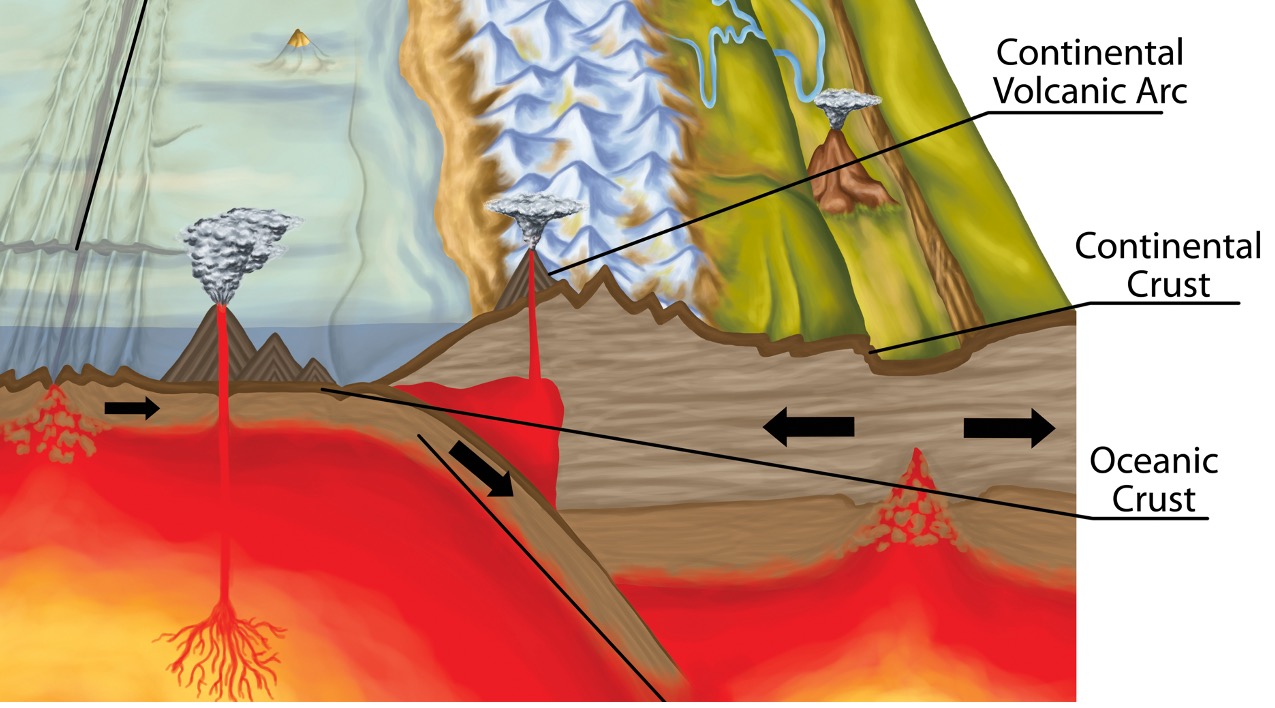 Figure 22. Subduction Overview.
Figure 22. Subduction Overview.
The main difference between the creationist and secular understanding is that, in creationist understanding, during the Flood plate speeds were about five miles-per-hour instead of just a few inches per year, as they are measured to be today. The much higher speed is why the process during the Flood is referred to as Catastrophic Plate Tectonics.[vi]
What evidence is there for plate tectonics?
The evidence supporting the concept of plate tectonics is overwhelming. Let’s quickly tour some of the key evidences, starting first with the “big picture,” then investigating some of the physical evidences in more detail.
Evidence 1: The continents fit together like puzzle pieces
One of the clearest evidences is that the continents fit together like puzzle pieces. While many school textbooks credit Alfred Wegener, a meteorologist, with the “discovery” that the continents “drifted” from an original super-continent (Pangea or similar configuration) to their current location, it was actually a creation scientist who brought this to light much earlier. His name was Antonio Snider-Pellegrini (1802–1885), a French geographer and scientist, who theorized about the possibility of continental drift. In 1858, Snider-Pellegrini published his book, La Création et ses mystères dévoilés (“The Creation and its Mysteries Unveiled”) which included the image in Figure 23.
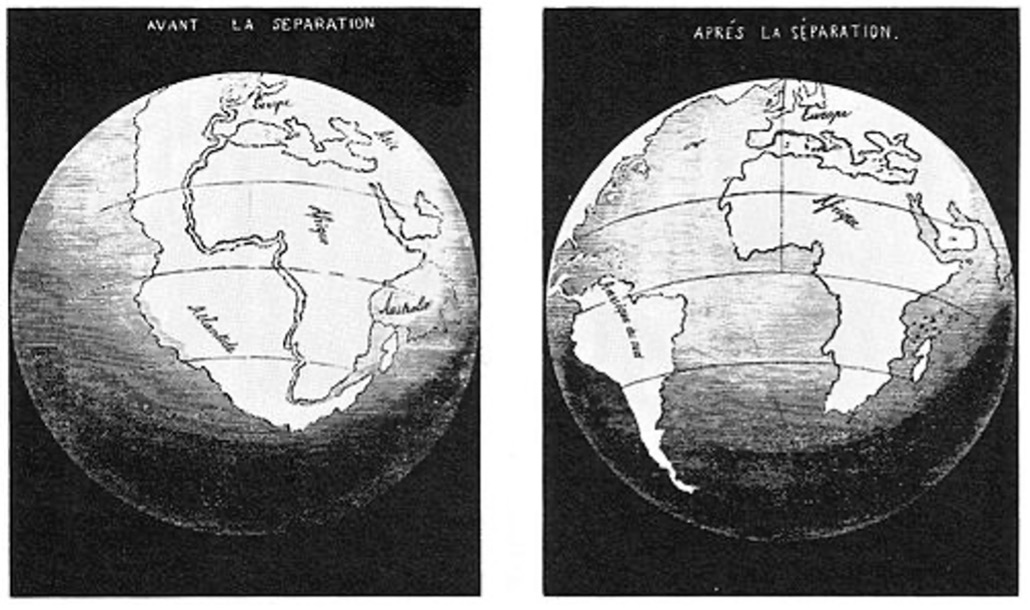
Figure 23. Snider-Pellegrini made these two maps in 1858, showing his interpretation of how the American and African continents once fit together before becoming separated.
Snider-Pellegrini based his theory on the Genesis Flood, the obvious shape and fitting of the continents, and the fact that plant fossils found in both Europe and the United States were identical.[vii]
Modern mapping technologies and the help of bathymetric maps that reveal the shapes and contours of the continental shelf and the ocean floor allow us to clearly see that the continents were once connected and later torn apart. Figure 24 shows what earth looks like with all the ocean water removed. Without the oceans, the deep shelves on each side of the continents become visible and we can see how the continents fit together like puzzle pieces to shape an earth that used to be mostly a single land mass.
Interestingly, this perfectly fits the Genesis account: “Then God said, ‘Let the waters under the heavens be gathered together into one place, and let the dry land appear’; and it was so. And God called the dry land Earth, and the gathering together of the waters He called Seas. And God saw that it was good” (Genesis 1:9–10). This is especially obvious when looking at the matching jagged edges of lower South America and Africa (see Figure 24).

Figure 24. Lower South America Matching Africa.[viii]
We can also see how a notch of submerged land off the grand banks of Newfoundland fits nearly perfectly into a slot north of Spain (see Figure 25).
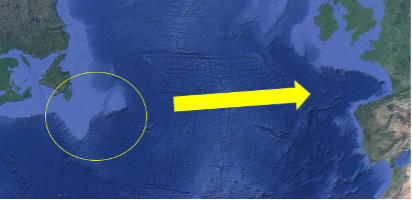
Figure 25. Submerged land off the Grand Banks of Newfoundland fitting into a Slot North of Spain (Google Earth).
From a Biblical standpoint, the continents fit together so well because of the catastrophic linear rifting that occurred when the fountains of the great deep were “cleaved” and pulled apart only a few thousand years ago.
Evidence 2: The Oceanic Ridge System
The oceanic ridge system covers more than 40,000 miles and circles the earth 1.6 times over.
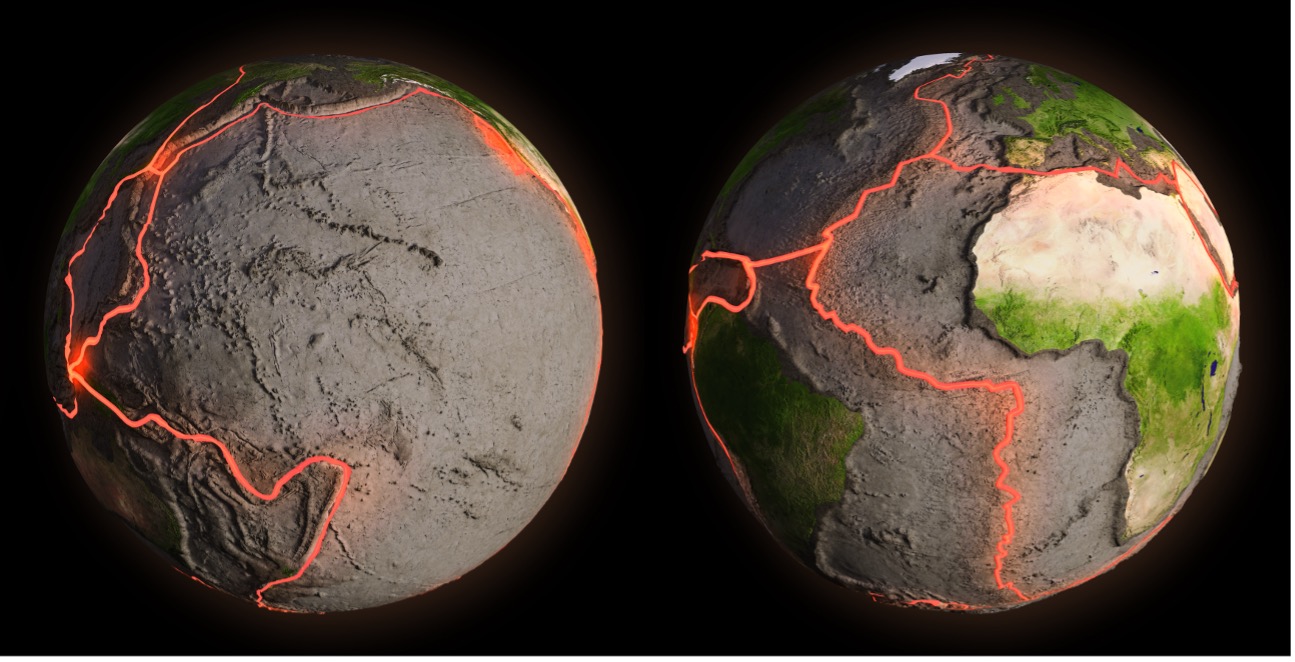
Figure 26. Oceanic Ridge System.
The Mid-Atlantic Ridge (MAR) represents one of the largest rifts left behind by the global seafloor spreading process. It looks like a giant baseball seam running around the face of the earth.

Figure 27. Mid-Atlantic Ridge (MAR).[ix]
The MAR is part of the longest mountain range in the world and includes perpendicular faults along its entire length, known as transform faults, showing the formation of new seafloor involved a pulling apart of the ocean basin. The sharpness of the faults and the abrupt edges indicate that little time has expired since their formation. The raised and sloped features on each side of the rift also testify to the hot and buoyant rock that still lies beneath it. From a Biblical standpoint, the formation of the Atlantic basin occurred quickly during the Flood and then slowed down greatly to about an inch per year, as GPS measurements today indicate.
Evidence 3: Ring of Fire
The Ring of Fire is a 25,000-mile horseshoe-shaped string of oceanic trenches in the Pacific Ocean basin where about 90% of the world’s earthquakes and a large fraction of the world’s volcanoes occur.[x] It is also where most of the plate subduction is taking place today. From a Biblical perspective, this long belt of volcanoes and earthquakes marks the location where vast amounts of ocean plate was rapidly subducted into the earth’s interior during the Flood. Today, by comparison, the speed of subduction is extremely slow, and the resulting earthquakes and tsunamis are dramatically less frequent.
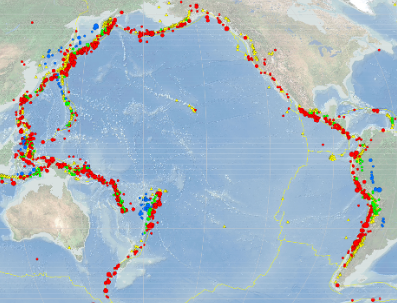
Figure 28. USGS 1900-2013 Earthquakes in the Ring of Fire.[xi]
How is CPT different from the secular understanding of plate tectonics?
CPT is basically the expression at the earth’s surface of a recent, massive, and rapid overturn of rock inside the region inside the Earth known as the mantle, which is the 1,800-mile thick layer of rock between the Earth’s core and its crust. Regions of cooler rock in the upper part of the mantle have a natural tendency to sink downward toward the bottom, and regions of warmer rock at the bottom have a natural tendency to rise upward toward the surface. When conditions are right, this natural tendency for rising and sinking can “run away,” such that both rising and sinking become faster and faster—up to a billion times faster. The force responsible for driving this behavior is simply gravity. From a Biblical perspective, the runaway episode responsible for CPT occurred during the Flood described in Genesis 6–8.
The possibility that runaway behavior might occur in the mantle was discovered decades ago in laboratory studies[xii] that explored how mantle minerals deform at mantle temperature and stress conditions. These basic experiments revealed that mantle minerals weaken by factors of more than a billion for stress levels that can readily arise inside the earth. Computer experiments[xiii] later confirmed that episodes of runaway overturn in the mantle are inevitable under the right conditions because of this inherent weakening behavior demonstrated in these laboratory experiments.
What might be the consequences at the earth’s surface of a runaway overturn event in the mantle? One notable consequence is that the tectonic plates at the earth’s surface get caught up in the rapid flow of rock within the mantle beneath. In particular, the ocean plates that are currently diving into the mantle at the deep-ocean trenches during the overturn did so at a spectacularly accelerated pace. Likewise, in zones known today as spreading ridges (such as the Mid-Atlantic Ridge) where tectonic plates are moving apart from one another, the speed of separation during the overturn was dramatically higher.
Just how much faster would the plate motions during such an overturn event be compared with what is occurring today? This can be estimated based on the time frame provided in the Bible’s account of the Flood and on the amount of plate motion associated with the part of the rock record that contains fossils of the plants and animals buried in the Flood. From these numbers one obtains a plate speed on the order of five miles-per-hour. A typical plate speed today, as measured by GPS, is on the order of a couple inches per year. The ratio of these two speeds is about one billion to one.
What are other noteworthy consequences of such rapid plate motions? One is that water on the ocean bottom in the zones where plates were moving apart so rapidly was in direct contact with the molten rock which was rising from below to fill the gap between the plates. This molten rock at about 1300º C converted the ocean water to steam at extremely high pressure. This steam organized to form in a linear chain of intense supersonic jets along the entire midocean ridge system. As these jets pierced the layer of ocean water above where they were formed, they entrained massive amounts of liquid seawater, which was lofted high above the Earth. This liquid water then fell back to the surface as rain. Hence, a direct consequence of rapid plate motions was persisting rain over much if not most of the earth.
A second prominent consequence of rapid plate motion was a rising sea level that flooded the land surface with ocean water. The rising sea level resulted from a decrease in the volume of the ocean basins. Behind that decrease was the loss of original cold ocean plate as it plunged into the mantle at an ocean trench and its replacement with new and much warmer ocean plate produced by seafloor spreading at a mid-ocean ridge. The new plate was on average 500–1000º C warmer than the cold plate it replaced. Because warm rock of a given mass has more volume than cold rock of the same mass, the ocean floor above new ocean floor was 0.6–1.2 miles higher than was the old ocean floor. As more and more new ocean floor was generated at mid-ocean ridges, while more and more of the original ocean floor was removed by recycling into the mantle, the global sea level relative to the land surface rose by thousands of feet. Hence, a notable result of rapid plate motion was a rising sea level and a dramatic flooding of the continents by ocean water.
A third major consequence of the rapid plate motion is the generation of a huge number of giant tsunamis. In today’s world, at an ocean trench where an oceanic plate is steadily slipping into the mantle, the adjacent overriding plate generally is locked against it and is bent downward as the other plate slides into the mantle (see Figure 29). As this motion proceeds, the overriding plate is deformed more and more in a spring-like manner until a stress limit is exceeded. At this point the two plates unlock, significant slip between the plates occurs, and the overriding plate returns to its original shape. Such an unlocking and slip event usually produces an earthquake. If the slip event is large enough it also can launch a tsunami. During the Flood, when plate speeds were a billion times higher than today, it is almost certain that this same locking and unlocking phenomenon also prevailed. The higher plate speeds and the huge amount of seafloor recycled into the mantle would have generated vast numbers of huge tsunamis. Conservative estimates are in the range of 50,000–100,000 or more tsunamis, with wave heights in the range of hundreds of feet or higher.
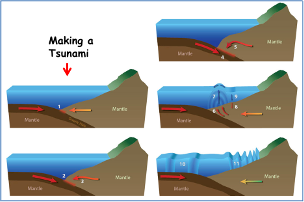
Figure 29. Making a Tsunami (Baumgardner, 2018).
Numerical experiments undertaken by Dr. Baumgardner to model the erosion and sediment deposition aspects of this sort of tsunami activity show that it is readily capable of producing the observed continent sediment record. This work is described in a recent paper titled, “Understanding how the Flood sediment record was formed: The role of large tsunamis.”[xiv] Figure 30 shows a plot from this simulation that includes the plate motions.[xv] Hence, a third major result of rapid plate motion is the formation of the observed layer-cake pattern of fossil-bearing sediments across the continents.
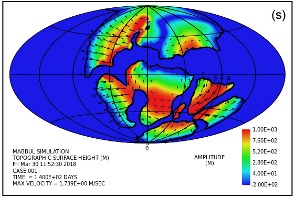
Figure 30. Plot from Dr. John Baumgardner’s CPT Tsunami Simulation.[xvi]
Dr. Baumgardner’s simulation allows us in a limited way to rewind time to gain some insight into what happened during the year-long Genesis Flood. Below we’ll review some of the major physical evidences that support CPT.
Physical evidences that support the reality of CPT
Evidence 1: Catastrophic Subduction
The oceanic plates that rapidly subducted under the continents during the Flood are still visible! Seismic images of the mantle reveal a ring of unexpectedly cold rock at the bottom of the mantle, beneath the subduction zones that surround the Pacific Ocean. This structure is obtained using a technique known as seismic tomography that folds together data from 10,000 or more seismograms at once.
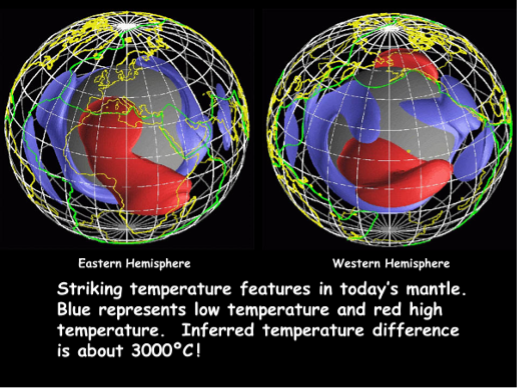
Figure 31. Cold Plates (Blue) that Subducted under the Continents During the Flood.[xvii]
Evidence 2: The Fossil Record
The action of CPT caused the oceanic plates to subduct rapidly under the land masses and generate cycles of tsunamis that brought staggering quantities of sediment onto land that wiped out every living creature in their paths, burying them in the muddy layers we still see today. These types of tsunamis still occur, although much less frequently and on a smaller scale. The moving sea floor subducts, snags under the land masses, and then releases, creating mud-filled tsunamis that carry debris and sea life onto land, sorting them in layers.
Giant, high-frequency tsunamis that were occurring during the Flood explain why today we see dinosaur graveyards around the world, including 13 states in the middle of America, containing dead dinosaurs mixed with marine life (see Figure 32). What type of Flood could do this? Just how much water would it take to bury millions of land creatures under hundreds of feet of mud and sand in the Morrison Formation (a 13-state, 700,000 square mile area)?
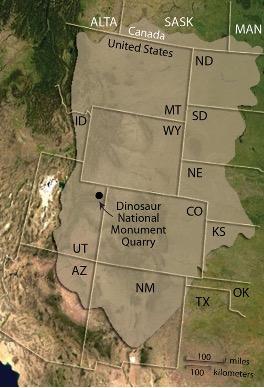
Figure 32. Morrison Formation.[xviii]
Just how did so many land creatures get buried together with marine life, with 97% of the dinosaurs found disarticulated,[xix] and many of the remaining 3% that are found intact discovered in mud and sand layers with their necks arched back, suffocating as they died?[xx]
A global inundation that covered most of North America is no secret to secular geologists, but they call it something different: the “widespread Late Cretaceous transgression”[xxi] (essentially technical jargon for “worldwide flood”). Studies have revealed that “a sea level rise of 310 meters is required to flood the Cretaceous layers based on their current elevation.” The challenge for secular geologists, however, is that the maximum thickness of the fossil layers produced by a 310-meter sea level rise is only about 700 meters, but in North America, nearly 50 percent of the Cretaceous layers contain strata thicker than 700 meters.
Sediment transport via highly turbulent tsunami-driven flow described in Baumgardner’s published work logically seems to be required to account for these thick layers. These layers also suggest that the continents also had to downwarp locally during this global inundation, as Baumgardner’s modeling likewise suggests. This is what CPT predicts and what the Flood would have done. There’s just no way that rising sea levels alone can explain the fossil record in North America—mechanisms much more powerful and catastrophic had to be involved.
Evidence 3: Fossil Correlation[xxii]
By comparing fossils of small organisms found on the ocean floor with fossils of the same organisms on different continents, it has been possible to determine when the ocean crust formed in terms of the fossil sequence found in the continental sediments. What has been discovered, both from a creationist as well as from a secular understanding, is that much of the continental fossil record was already in place before any of the present-day ocean crust had come into existence. For example, all the trilobite fossils had already been deposited, plus all the older coal deposits (Pennsylvanian System coals) had already been formed before any of the present-day ocean crust had formed.
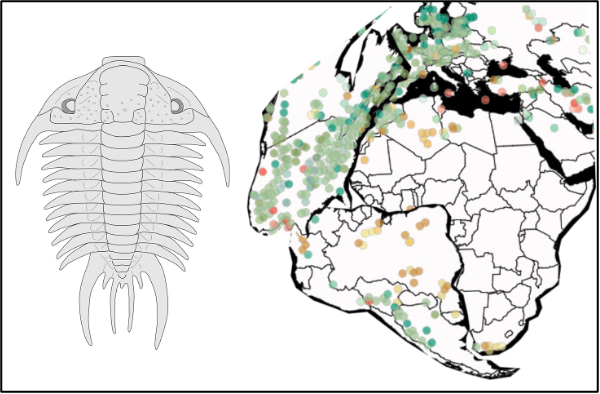
Figure 33. Reassembling the continents shows a trilobite habitat torn apart by the Flood.
The fossil record (e.g., certain trilobite species) that now straddles both sides of the MAR testify to the rapid nature of this catastrophe, with millions of the same kinds of animals that were once living together now found buried in mud and lime layers on either side.
In the creationist understanding, the presence of fossils is a trustworthy indicator of the action of Flood, meaning that a large part of the Flood cataclysm had already unfolded and had generated fossil-bearing sediments on the continental surface before any of the present-day ocean floor had appeared. It further implies that all of today’s ocean floor formed since the onset of the Flood, during roughly the latter half of the cataclysm. It also means that all the pre-Flood ocean floor, plus any ocean floor formed during the earlier portion of the Flood, must have been recycled into the earth’s interior during the cataclysm. These considerations indicate in a compelling way that rapid plate tectonics must have been a major aspect of the year-long Flood catastrophe.
Evidence 4: Buckled/Folded Sedimentary Layers
The Genesis Flood laid down tens of millions of cubic miles of sediment like sand and mud all over the globe. It soon hardened into rock. These layers contain most of the fossil record. Some of these massive layers are bent and even folded, proving they were laid down rapidly and then bent before hardening into rock. Otherwise they would have crumbled instead of bending. These folded and bent geological features are found all over the world and most occurred during the latter stages of the Flood when 80% of the world’s mountains rapidly formed.
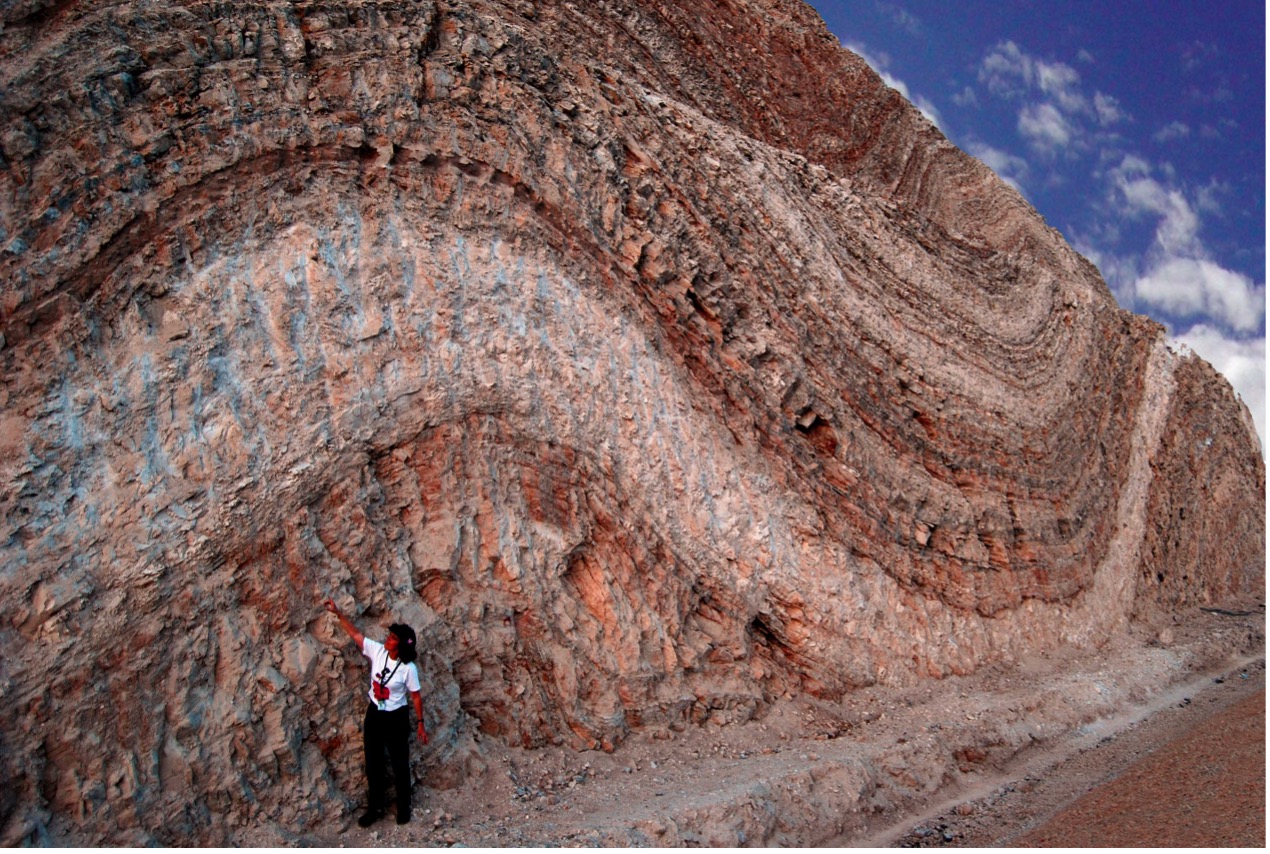 Figure 34. Example of Massive Geologic Folding.[xxiii]
Figure 34. Example of Massive Geologic Folding.[xxiii]
Evidence 5: River Fans
If the evolutionary view about the continents were true (that they moved apart slowly over millions of years), the large rivers on the continents that empty into the Atlantic Ocean would have left a connected trail of mud stretching from one side of the Atlantic to the other. But what the evidence actually shows is that most of the seafloor spreading that formed the Atlantic was over before continental runoff and major transport of sediment into the Atlantic basin began. Major rivers like the Congo, Mississippi, and Amazon run off the continents and have mud fans with only thousands of years’ worth of mud deposits—not millions.
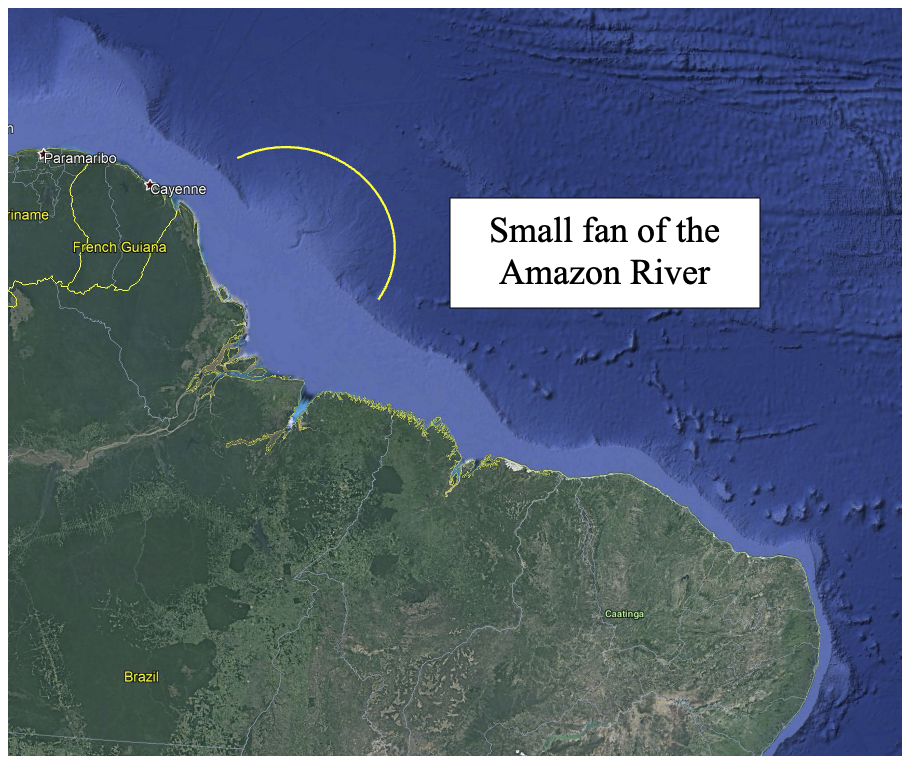
Figure 35. Amazon River Fan (Google Earth)
There are flat sand bottoms on each side of the continents showing they were split apart rapidly—they don’t have millions of years’ worth of runoff with considerable mud extending into the ocean. The continental shelves exhibit little erosion and still match nearly perfectly when put back together. Millions of years of erosion would have destroyed much of the sharp continental shelfs. These rivers began shaping and eroding only thousands of years ago, not millions.
Evidence 6: Sloss Megasequences
Dr. Tim Clarey has conducted extensive research on the Genesis Flood using over 2,000 stratigraphic columns (bore holes) from across North and South America, Africa, and Europe.[xxiv] These data confirm the existence of six megasequences (called “Sloss-type megasequences”), large-scale sequences of sedimentary deposits that reveal six different stages of global depositions that occurred during the Flood.
The three earliest megasequences (Sauk, Tippecanoe and Kaskaskia) contained mostly marine fossils, indicating that only shallow marine areas were swamped and buried by CPT-caused tsunamis. The 4th megasequence (Absaroka) shows a dramatic rise in ocean level and overall global coverage and volume. This sequence also includes the first major plant (coal) and terrestrial animal fossils. The 5th megasequence (Zuni) was mostly responsible for the demise of the dinosaurs and appears to be the highest water point of the Flood (its zenith) because it shows the highest levels of sediment coverage and volume compared to earlier megasequences. The final megasequence (Tejas) contains fossils from the highest upland areas of the pre-Flood world. Together, these megasequences explain why over 75% of earth is covered by an average of about one mile of sedimentary deposits.
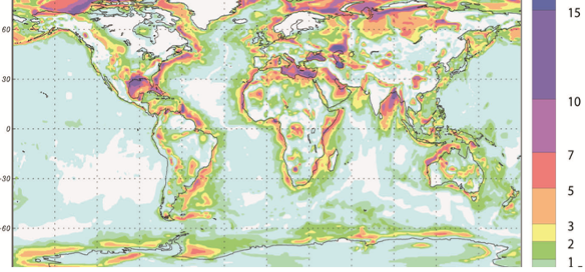
Figure 36. World Sediment Map (showing 75% of earth is covered by an average of about one mile of sedimentary deposits).
Evidence 7: Massive Coal Deposits
One of the highest and most severe stages of the Flood occurred during the 4th Sloss Megasequence, the Absaroka. Land creatures and plants start showing up in the fossil record laid down by this megasequence. This is also the time when the world’s ocean floor began to be created anew. In other words, the oldest ocean crust today only goes back to the time of the deposition of the Absaroka Megasequence.
Notice the top bars in the first seven labeled rows in Figure 37. This shows the global animal fossil occurrences from the Paleodatabase.[xxv] The lower bars in each row represent aquatic animals and the top bars represent land animals. The megasequences are shown on the left. Note that few land animals appear until the end of the Kaskaskia, then land animals begin increasingly showing up in the fossil record as the Flood progressed.
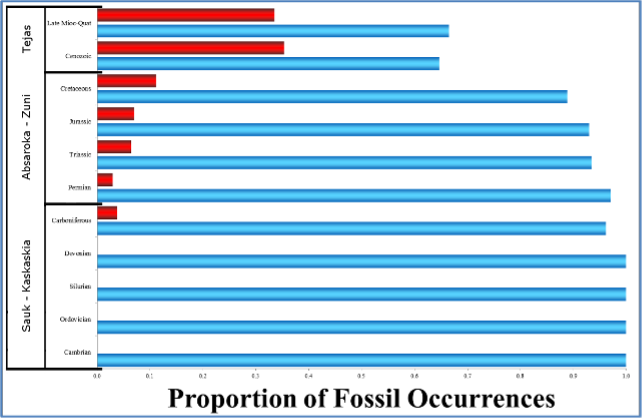
Figure 37. Sloss Megasequences and Fossil Deposits.[xxvi]
Entire ecosystems were buried during this megasequence in enormous deposits that later turned into coal, such as the extensive Appalachian coal beds. Even more coal was formed in the later Zuni and Tejas megasequences as the waters of the Flood rose yet higher. The U.S. has over seven trillion tons of coal reserves. Where did it all come from? While we know that coal is formed by dead plant material being sandwiched between sediment layers, we only have enough vegetation on the earth’s surface today to produce just a fraction of the existing coal reserves.[xxvii] This shows that the pre-Flood world was mostly covered by lush vegetation. The rising Flood waters and tsunamis that were necessary to sweep over the land and bury vast amounts of vegetation that turned into coal are best explained by a catastrophe of worldwide proportions.
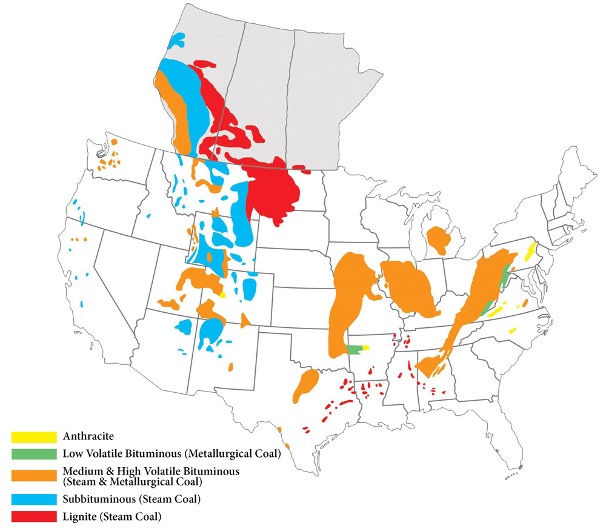
Figure 38. United States Coal Beds.
In the later run-off stages of the Flood (called the Tejas sequence), plants swept off the pre-Flood lands formed massive coal beds such as in the Powder River Basin of Wyoming and Montana. The Powder River Basin layers are the largest coal deposits in North America, currently supplying over 40% of the coal in the U.S. Some of these stacked coal beds are up to 200 feet thick and cover areas that are 60 miles long by 60 miles wide. The sheer volume of plant material required to form such a massive layer of coal testifies to catastrophic circumstances.
Was Noah’s Ark Seaworthy?
Next let’s investigate whether the Ark was seaworthy. God gave certain dimensions to Noah for building the Ark: 300 cubits long, 50 cubits wide, and 30 cubits high. Using the Nippur Cubit[xxviii] at 20.4 inches, this works out to a vessel about 510 feet long, 85 feet wide, and 51 feet high. Accounting for a 15% reduction in volume due to the hull curvature, the Ark had about 1.88 million cubic feet of space, the equivalent of 450 semi-trailers of cargo space.[xxix] Twice as long as a Boeing 747 and stretching over one-and-a-half football fields, this was a massive ship.
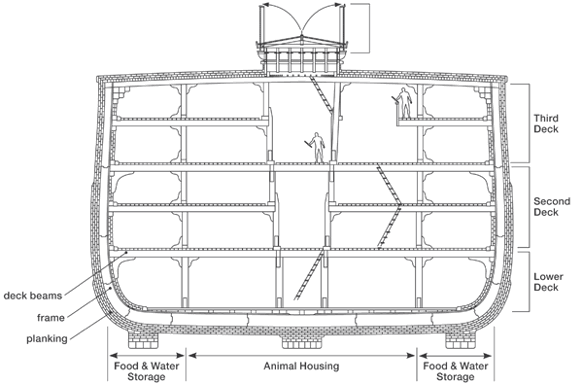
Figure 39. Cross-section view of a possible design of the interior of the ark.[xxx]
God knew exactly what He was doing when He gave Noah the specific dimensions of the Ark. In 1993 Dr. Seon Won Hong conducted a scientific study[xxxi] to investigate the seaworthiness of the Ark at the renowned ship research center KRISO (now called MOERI) in South Korea.[xxxii] After evaluating the seaworthiness of over 10 various ship dimensions, the study showed that the Ark dimensions given in the Bible were ideal for handling everything a highly turbulent sea could throw at it, while balancing the need for inhabitant safety. The study showed that the Ark could handle 100-foot waves.
An earlier study conducted in the 17th Century by Peter Jansen of Holland showed that the length-to-width ratio of the Ark (about 7-to-1) was ideal for such a massive, non-powered sea vessel. Some oil tankers have a 7-to-1 ratio as well. He also demonstrated using replica models of the Ark how tough it was to capsize.[xxxiii]
Noah was instructed by God to coat the inside and the outside of the Ark with pitch, a thick gooey substance secreted by trees as a means of protection against infection or insect attack. Isn’t it interesting that one of the very first historical references to using pitch for ships is in the Bible? It’s also interesting that pitch has been the most effective and widely-used ship waterproofing substance in history. For centuries, tar, which is made from pitch, was among Sweden’s most important exports, peaking at over a quarter million barrels per year in the late 1800s. Many of the eastern states in the U.S. were also major tar exporters for ship building purposes until the 1900s.[xxxiv]
When heated into a liquid state and applied to ship planking, pitch hardens almost instantly into a protective, waterproof shell, very similar to how epoxy or fiberglass are used in shipbuilding today. The strong outer shell provided by hardened pitch adds both strength and waterproofing beyond the natural capability of the wood. These “divine shipbuilding instructions” given to Noah certainly seem to make realistic sense.
Noah’s Ark vs. the Gilgamesh Ark
Now let’s compare the Biblical Flood to the leading flood myth, the Epic of Gilgamesh. In 1853, archaeologists found a series of 12 tablets dated to around 650 BC, although parts of the story existed in earlier, fragmentary versions.[xxxv] Because the story had many of the same elements as the Genesis account, skeptics believed that Gilgamesh preceded the Biblical account, negating the Genesis account as just a spin-off. Fortunately for Christians, however, there are major clues that point to the Biblical account as the accurate one, and Gilgamesh as a later work of fiction that incorporated legendary elements of a flood within a cultural fantasy. Here are the reasons why.
First, we have the feasibility of the Gilgamesh version of the Ark, described as a massive, unstable cube that was about 200 feet on each side with six decks that divided it into seven parts. Along with help from the community and craftsmen, he supposedly built this vessel—which was over three times the size of the Biblical Ark, in just a week.
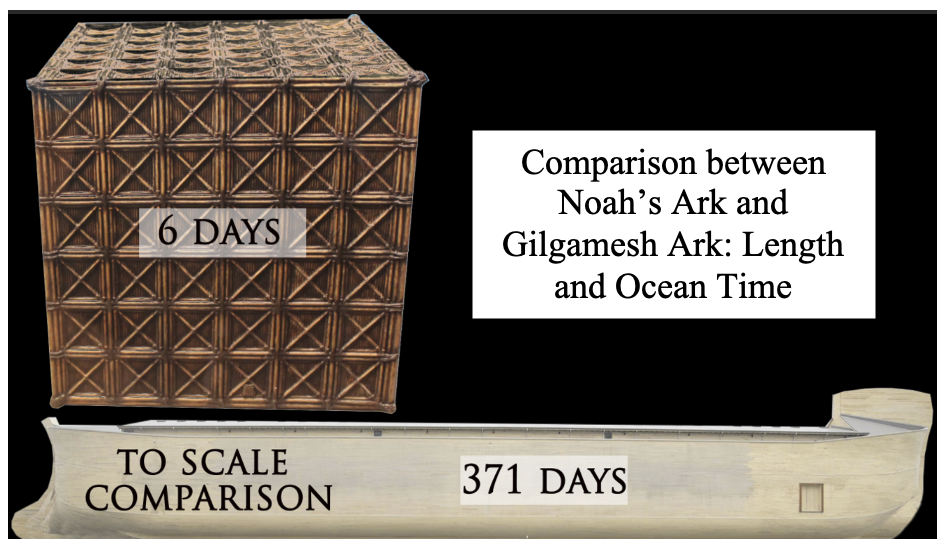
Figure 40. Noah’s Ark vs. Gilgamesh Ark.[xxxvi]
How would something like this fare during a catastrophic, worldwide Flood? It would obviously tumble, killing or maiming its passengers. That’s obviously quite different than the biblical Ark which had a 7-to-1 length-to-width ratio which is very similar to many of today’s ocean barges, making it a feasible design for staying afloat during the Flood. Scripture provides clues that Noah and helpers likely had between 55 and 75 years to build the Ark.[xxxvii]
The second key for determining which of these Flood accounts is the original is the duration of the Flood provided by each. The Gilgamesh flood lasted a mere six days, whereas the Genesis Flood lasted 371 days. Both accounts claim the Flood was worldwide, but how could water cover earth in just six days? A floating, 200 X 200 X 200-foot cube and six days for worldwide inundation certainly stretch credulity.
The next consideration is the reasons for the Flood given by each of the two accounts. In the Genesis account, God’s judgment is just—he was patient with utterly wicked mankind for 120 years before sending the Flood and showed mercy to the last righteous family. In the Gilgamesh account, the Flood was ordered by multiple, self-centered squabbling ‘gods’ that were ‘starving’ without humans to feed them sacrifices. These two are quite different!
Finally, there are several other parts of the Gilgamesh account that are obviously mythical, such as Gilgamesh being 2/3rds divine and 1/3rd mortal. After oppressing his people, Gilgamesh and others call upon the ‘gods’ and the sky-god Anu creates a wild man named Enkidu to fight Gilgamesh. The battle is a draw, and they become friends. Gilgamesh apparently also encounters talking monsters and a “Scorpion man” in his journeys.
Scholars rely on their anti-Bible bias, not science, to assert that the Gilgamesh story came first. These stark differences between Genesis and Gilgamesh accounts highlight the feasibility and priority of the biblical one. The Gilgamesh account was written 800 years[xxxviii] after Genesis and describes a cube-shaped Ark 200 feet on each side tumbling around in the ocean in a 6-day flood put on by the “angry, fighting gods” that sent it. The Bible’s Flood was recorded earlier, has an Ark sealed on the inside and out with dimensions that are on par with today’s ocean liners, lasted a full year, and was sent to judge an Earth that deserved it.
In fact, it’s the similarities between these two accounts that shows the Bible’s account to be the historical one. Many myths are based on historical accounts, but they get embellished over time, becoming more and more mythical as the story is repeated over generations. This is exactly what we see with flood myths like Gilgamesh—they take the original, historical account (the Biblical Flood) and grow it into a mythical, interesting story over time.
For example, the earlier version of the Gilgamesh Flood account[xxxix] clearly identifies the flood as a local river flood, with the dead bodies of humans filling the river “like dragonflies” and moving to the edge of the boat “like a raft” and moving to the riverbank “like a raft.” Centuries later, this gets exaggerated into a global, worldwide flood where humans killed in the flood “fill the sea” like a “spawn of fish.”
Both accounts have a God or “gods” that are sending judgment, describe a worldwide inundation, have an Ark built to specific dimensions that are loaded with surviving humans and animals, and land just a few hundred miles apart from each other after using birds as a test to find dry land. Myths often grow from historical to being more mythical, but they almost never develop in the reverse, becoming more truthful and accurate over time. While these accounts mirror each other in so many ways, which account is the original, historical one? The feasible one of course. While both accounts describe plenty of divine intervention, only the Biblical ark size, shape, function, build time, and flood duration makes sense.
Jesus taught about a real flood and compared it to what the end times will be like. Jesus warned: “But of that day and hour no one knows, not even the angels of heaven, but My Father only. But as the days of Noah were, so also will the coming of the Son of Man be. For as in the days before the flood, they were eating and drinking, marrying and giving in marriage, until the day that Noah entered the ark, and did not know until the flood came and took them all away, so also will the coming of the Son of Man be.”
Because Jesus stood firmly on the historicity of the Flood and likened it to end times (Matthew 24:36–44), the two go hand-in-hand. If the Genesis Flood never happened, we have no foundation for believing in the rest of what Jesus said, including His second coming. At least for Christians, Matthew 24 alone should destroy the “Flood as myth” idea. When looking back through history, we observe that some mythical accounts begin with a true event, but then get embellished over time, becoming more and more mythical.
Noah’s Flood: How Could All the Animals Fit on the Ark?
Next let’s look at one of the most frequently asked questions about the Ark: “How could it fit all the animals?” Two factors help answer this question: (1) the size of the Ark, and (2) the number (and size) of the animals and supplies on board. First, the size. Given the size of the Ark (discussed above), the Ark had a total volume of at least 1,396,000 cubic feet.[xl] The inside dimensions of a 40-foot school bus gives about 2,080 cubic feet of space. Therefore, at least 671 school buses without their wheels and axels could fit inside of Noah’s Ark. If each bus carried 50 students, then 33,550 kids could easily fit in the Ark.
Next, we have the number of animals. The Genesis Flood account states that God brought two (male/female) of every kind of animal (and seven pairs of some) to Noah, who loaded them into the Ark. The Hebrew term for kind is min, which occurs only 31 times in the Old Testament. So just what is a biblical kind? Biblically and biologically speaking, a kind is a group of animals that were naturally interfertile at the time of the Flood. Some organisms have complex histories since then, so it’s difficult to determine which of them belongs to which kind. Most often, however, plants and animals interbreed within their modern “Family” classification. Thus, each family—give or take—had at least two representatives on Noah’s ark. Several creation scientists have spent considerable amount of time studying this very topic (it’s called the field of baraminology, or the study of “created kinds”).[xli]
While there are various methods for determining “kinds,” (e.g., cognitum and statistical baraminology), hybridization (whether two species can have offspring) is considered the most valuable evidence for inclusion within an Ark kind.
Take mammals for example. Some biologists list them in 28 orders that include 146 families and over 4,800 species.[xlii] Some place the species estimates higher, around 5,400.[xliii] So how many different mammal pairs would Noah have to take on the Ark to produce all the mammal species we have today? Take the dog (Canine) kind for starters. The World Canine Organization currently recognizes 339 different breeds of dogs—all are or were interfertile. There are 335 horse breeds that are all interfertile. There are eight bear species in the bear (Ursidae) family and all except for one are interfertile. Notice how the high number of species quickly collapses to a much smaller number?
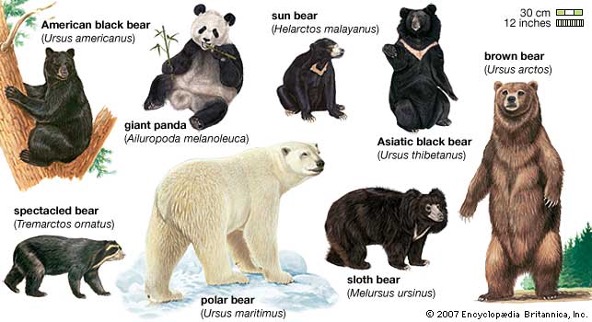
Figure 41. Ursidae Family (Bears).
Some scientists have boiled down this list of mammal species to only 138 created kinds (using extant species, or animals still alive today). Including the extinct mammalian families known from the fossil record, the actual number on the Ark could have exceeded 300.[xliv] By collapsing the other animal categories in a similar manner, the total estimate of the number of kinds needed on the Ark is fewer than 2,000.[xlv] Dinosaurs were certainly included on the ark, since Scripture says any animal that walked and had nostrils went in, with many dinosaur count estimates at the species level less than 1,000 and fewer than 80 at the family level.[xlvi] Probably only 160 individual dinosaurs survived the Flood on Noah’s Ark. Noah’s family could have loaded young behemoths, not the larger older ones. Dinosaur kinds, plus many other animals, went extinct after the Flood.
Noah’s Flood: How Did People and Animals Disperse Around the World after the Flood?
After the Flood, God commanded humanity to “increase in number and fill the earth” (Genesis 9:1). As rebellious humans, we did the opposite: “Then they said, ‘Come, let us build ourselves a city, with a tower that reaches to the heavens, so that we may make a name for ourselves and not be scattered over the face of the whole earth’” (Genesis 11:4). About 100 years after the Flood, God responded to this disobedience by confusing our language and dispersing us from the Tower of Babel around the globe. This dispersal included between 78 and 100 people groups (and languages).[xlvii]
Assuming the Babel dispersion is a true account, how did people spread across the globe when much of it is presently covered by water? The answer is quite simple: during the (single) Ice Age that began after the Flood and lasted for a few hundred years after, the ocean levels were between 100 and 140 meters lower[xlviii] than they are today. This made land bridges and ice bridges that melting ice has since submerged. Also, in many cases (e.g., Hawaii, North America, Tahiti, and other locations) both humans and animals arrived by boat. For more about this topic, we recommend Bill Cooper’s book, After the Flood: The Early Post-flood History of Europe Traced Back to Noah (2008) and other resources by Answers in Genesis.[xlix]
Worldwide Flood Legends
Looking back through history, there are actually hundreds of flood accounts, and the similarity between these accounts and the Genesis Flood are uncanny.[l] Most of them seem to draw from the same common themes: judgement from God, a family chosen to preserve humanity, and loading animals. The early Chinese certainly seemed to have Genesis and the Flood in mind when they invented the earliest version of written language.[li]
For example, the character for create includes the idea of speaking into dust to create man. “Garden” is symbolized by placing a person who was created by breathing into dust into an enclosure. “Boat” is a “vessel with eight people,” and flood is represented by a global watery inundation over the earth and “eight” is included. The character for “forbidden”[lii] is “two trees with God,” in a way that notifies “God makes a commandment about two trees.” The one for “temper” is “devil with trees under cover.” Where did the Chinese picture concepts come from? Why do these figures match Genesis history so clearly?

Figure 42. Chinese Language and Genesis (ICR).
Isn’t it also interesting that all human history disappears about the same time as the Biblical Flood? Even secular school textbooks admit this, with most placing the earliest human writing between 4,000 and 5,000 years before present. This is exactly what we would expect with civilization starting again after the Flood.
In summary, the Bible clearly lays out a Flood account that, while miraculous, fits into history with much more believability than the mythical accounts. The Ark is the only vessel in the ancient Flood accounts that could have actually survived the Flood. It was seaworthy and watertight, it fits the dimensions of many similar ships today, and could certainly hold the thousands of animal kinds necessary to blossom into the variety of animal life we see today. The obvious scars around the world also coincide well with the Bible’s account, matching both the megasequences in the geologic record and the massive, worldwide fossil record consisting of billions upon billions of animals buried in the muddy catastrophe that killed them.
Noah’s Flood: Worldwide or Local?
Some Christians believe the earth is 4.5 billion years old and that the Flood described in the book of Genesis 6–9 was a local event limited to where Noah lived in the Mesopotamian Valley region. Why? Primarily because of their perspectives on the fossil record and radiometric dating. They believe the fossil record was laid down over millions of years and do not believe that a global flood could have formed those fossils. By tracing genealogies in the Bible, we know the Flood occurred around ~4,400 years ago. However, according to conventional geologists (who believe in long ages) there is no evidence in the geologic record for a recent global flood. Yet, there is significant evidence that most of the fossil record was created by the Genesis Flood! Let’s look at eight reasons for believing the Genesis Flood was a global, catastrophic event.
- Massive geologic layers: The Genesis Flood laid down millions of cubic feet of sediment like sand and mud all over the globe. It soon hardened into rock. These layers contain most of the fossil record. Some of these massive layers are bent and even folded (such as at the Kaibab Upwarp in the Grand Canyon), proving they were laid down rapidly and then bent before hardening into rock. Otherwise they would have crumbled instead of bending.
- Fossil record: The fossil record is world-wide and shows evidence of rapid burial. Specific examples include clam and oyster shells on mountain tops that were fossilized while still closed, fish buried in the process of eating other fish, jellyfish and other soft-bodied organisms which decay rapidly, and ichthyosaurs that were buried while giving birth. The Flood accounts for such widespread watery catastrophe.
- The Flood covered the highest mountains: Scripture says that the “waters rose and increased greatly on the earth, and the ark floated on the surface of the water. They rose greatly on the earth, and all the high mountains under the entire heavens were covered. The waters rose and covered the mountains to a depth of more than fifteen cubits [about 22 feet]” (Genesis 7:18–20, emphasis added). Of course, the writer refers to the mountains of the pre-Flood world, which were likely much shorter than today’s tallest mountains. Since water seeks its own level, it would be impossible for the water to cover the highest mountains and still be only a local event.
- Purpose of the Flood: Due to widespread wickedness and violence, God decided to wipe out all of mankind, the land-dwelling animals and birds (except for those who were on the Ark). God said the earth “was corrupt and filled with violence” (Genesis 6:11–12), and that He was going to “bring floodwaters to destroy every creature on the face of the earth that has the breath of life in it” (Genesis 6:17). He also specifically mentioned people multiple times: “I will wipe from the face of the earth the human race I have created” (Genesis 6:7). Since it is highly improbable that all of the people on earth lived in the Mesopotamian Valley region, a local flood would not have accomplished God’s purpose.
- Use of the words “all” and “every” and “everything” in Genesis chapters 6–9: The words “all,” “every” and “everything” are used 66 times in the Genesis Flood account. Many of these verses describe the creatures and people that perished during the flood. It is very clear by the context of these passages that God meant He was going to destroy all living creatures that live on land (except for those on the Ark). For example: “Every living thing that moved on land perished—birds, livestock, wild animals, all the creatures that swarm over the earth, and all mankind. Everything on dry land that had the breath of life in its nostrils died. Every living thing on the face of the earth was wiped out; people and animals and the creatures that move along the ground and the birds were wiped from the earth. Only Noah was left, and those with him in the ark” (Genesis 7:21–23, emphasis added). If the text doesn’t mean what it says, then it means nothing. Jesus and Peter also referred to the universality of Noah’s Flood. Who are we (who were not even there) to say that they were wrong?
- The Ark: It likely took between 55 and 75 years to build the Ark.[liii] If the Flood was just a local event, why would God tell Noah to build a ship over 400 feet long (Genesis 6:15) and then bring on board all the different kinds of animals including birds to be saved? (Genesis 6:19–21). If the flood was only a local event, there would be no need for an ark—Noah and the animals that God wanted to save would have had plenty of time to travel to a safer area.
- God’s covenant: in Genesis 9:11, God made a promise, “Never again will all life be destroyed by the waters of a flood; never again will there be a flood to destroy the earth.” If the flood was local, then every time a local flood happens, God would break His promise.
- Jesus believed in a global flood: “Just as it was in the days of Noah, so also will it be in the days of the Son of Man. People were eating, drinking, marrying and being given in marriage up to the day Noah entered the ark. Then the flood came and destroyed them all” (Luke 17:26–27). Peter also affirmed a worldwide Flood (2 Peter 3:6).
We recommend the following resources for further study:
- Old Earth Creationism on Trial, Tim Chaffey and Jason Lisle
- The Global Flood; Unlocking Earth’s Geologic History, John D. Morris
- The Fossil Record; Unearthing Nature’s History of Life, John D. Morris
- The New Answers Book 3, Andrew Snelling and Ken Ham. Available here: https://answersingenesis.org/the-flood/global/was-the-flood-of-noah-global-or-local-in-extent/
We are grateful to the contributions and review of this chapter made by Drs. John Baumgardner (Liberty University) and Tim Clarey (ICR).
Footnotes
[i] Image Credit: Dr. John Baumgardner.
[ii] Answers in Depth, Vol. 5 (2010). www.answersingenesis.org/doc/articles/aid/v5/catastrophic_plate_tectonics.pdf (November 5, 2018).
[iii] See: “Noah’s Flood and Catastrophic Plate Tectonics (from Pangea to Today)” (Genesis Apologetics) (Available: https://youtu.be/zd5-dHxOQhg).
[iv] Continental Sprint: A Global Flood Model for Earth History https://youtu.be/0RLlbUBpzr0
[v] Chandler Burr, “The Geophysics of God: A scientist embraces plate tectonics—and Noah’s flood.” U.S. News & World Report. pp. 55–8. Archived from the original on August 10, 2007 (Original published June 8, 1997).
[vi] Thanks to Dr. John Baumgardner for contributing this section (personal communication, May 21, 2018).
[vii] Plate Tectonics Theory, National Park Service: for Teachers Scalera, Giancarlo (December 2, 2009). “Roberto Mantovani (1854–1933) and his ideas on the expanding Earth, as revealed by his correspondence and manuscripts.” Annals of Geophysics. 52 (6): 617.
[viii] AlteredQualia: https://alteredqualia.com/xg/examples/earth_bathymetry.html
[ix] Image Credit: National Geographic
[x] “Ring of Fire.” USGS. 2012-07-24. Retrieved 2013-06-13; “Where do earthquakes occur?” USGS. 2013-05-13. Archived from the original on 2014-08-05. Retrieved June 13, 2013.
[xi] Wikiedia.
[xii] S. H. Kirby (1983) “Rheology of the lithosphere,” Reviews of Geophysics and Space Physics 25, 1219–1244.
[xiii] J. R. Baumgardner (2003) “Catastrophic plate tectonics: the physics behind the Genesis Flood,” in Proceedings of the Fifth International Conference on Creationism, R. L. Ivey, Jr., Editor, Creation Science Fellowship, Pittsburgh, PA, 113-126.
[xiv] J. R. Baumgardner (2018). Understanding how the Flood sediment record was formed: The role of large tsunamis. In Proceedings of the Eighth International Conference on Creationism, ed. J.H. Whitmore, 287–305. Pittsburgh, Pennsylvania: Creation Science Fellowship.
[xv] Ibid.
[xvi] Ibid.
[xvii] J. R. Baumgardner (2018). “The Importance of the Genesis Flood to a Correct Understanding of the Earth’s Past” (PowerPoint Presentation).
[xviii] Image Credit: John D. Morris, 2012. The Global Flood: Unlocking Earth’s Geologic History. Dallas, TX: Institute for Creation Research.
[xix] Carl Werner, “Evolution the Grand Experiment,” The Grand Experiment: www.thegrandexperiment.com/index.html (January 1, 2014).
[xx] There is disagreement in the paleontology field as to whether the “dinosaur death pose” is due to choking while dying from drowning, or due to strong water currents arching the neck back after death. See: Reisdorf, Achim G. & Wuttke, Michael. “Re-evaluating Moodie’s Opisthotonic-Posture Hypothesis in Fossil Vertebrates Part I: Reptiles—the taphonomy of the bipedal dinosaurs Compsognathus longipes and Juravenator starki from the Solnhofen Archipelago (Jurassic, Germany),”
Palaeobiodiversity and Palaeoenvironments 92 (2012):119-168. Their findings stated, “From what has been presented above, it can be concluded that the formation of the ‘opisthotonic posture’ in subaquatically deposited carcasses of long-necked and
longtailed reptiles is the result of a postmortem process…this posture must be seen as a normal phenomenon that occurs during subaquatic gradual embedding of these sorts of carcasses.” See discussion: Drwile.com, “Arched Necks In Dinosaur Fossils: Is Water to Blame?” www.blog.drwile.com/?p=7118 (February 16, 2016).
[xxi] Liu, L., S. Spasojevi & M. Gurnis (2008), Reconstructing Farallon Plate Subduction Beneath North America back to the Late Cretaceous, Science,
322, 934-938; Spasojevi, S., L. Liu & M. Gurnis (2009), Adjoint Convection Models of North America Incorporating Tomographic, Plate motion and Stratigraphic Constraints, Geochem., Geophy., Geosys. 10, Q05W02; G. A. Bond, Geology 4, 557 (1976); Timothy A. Cross & Rex H. Pilger Jr, “Tectonic controls of late Cretaceous sedimentation, western interior, USA,” Nature, Volume 274, 653–657 (1978).
[xxii] Thanks to Dr. John Baumgardner for contributing this section (personal communication, May 21, 2018).
[xxiii] Image Credit: https://www.canyonministries.org/bent-rock-layers/
[xxiv] T.L. Clarey and D.J. Werner (2018). Use of sedimentary megasequences to re-create pre-Flood geography. In Proceedings of the Eighth International Conference on Creationism, ed. J.H. Whitmore, pp. 351–372. Pittsburgh, Pennsylvania: Creation Science Fellowship. Note: the literature on this topic reports 1,500 bore holes, but this has since increased to 2,000.
[xxv] Courtesy of Dr. Nathaniel Jeanson.
[xxvi] Image Credit: Clarey and D.J. Werner (2018).
[xxvii] Andrew A. Snelling, “How Did We Get All This Coal?” (April 1, 2013; last featured April 1, 2014): https://answersingenesis.org/biology/plants/how-did-we-get-all-this-coal/
[xxviii] Answers in Genesis: “Putting the Ark into Perspective” (January 23, 2014): https://answersingenesis.org/noahs-ark/putting-the-ark-into-perspective/
[xxix] Michael Belknap and Tim Chaffey, “How Could All the Animals Fit on the Ark?” (April 2, 2019): https://answersingenesis.org/noahs-ark/how-could-all-animals-fit-ark/
[xxx] John Woodmorappe, “Chapter 5: How Could Noah Fit the Animals on the Ark and Care for Them? (October 15, 2013; last featured March 2, 2014): https://answersingenesis.org/noahs-ark/how-could-noah-fit-the-animals-on-the-ark-and-care-for-them/
[xxxi] Dr. Hong earned his Ph.D. degree in applied mechanics from the University of Michigan, Ann Arbor.
[xxxii] S.W. Hong, S. S. Na, B.S. Hyun, S.Y. Hong, D.S. Gong, K.J. Kang, S.H. Suh, K.H. Lee, & Y.G. Je, “Safety investigation of Noah’s Ark in a seaway,” Creation.com: www.creation.com/safety-investigation-of-noahs-ark-in-a-seaway (January 1, 2014).
[xxxiii] John Whitcomb, The World that Perished (Grand Rapids, Michigan: Baker Book House, 1988): 24.
[xxxiv] Y. Eyüp Özveren Shipbuilding, 1590–1790, Vol. 23, No. 1, Commodity Chains in the World-Economy, 1590–1790 (2000), 15–86.
[xxxv] Frank Lorey, The Flood of Noah and the Flood of Gilgamesh
(March 1, 1997): https://www.icr.org/article/noah-flood-gilgamesh/
[xxxvi] Tim Lovett, “Comparing Gilgamesh,” (October, 2004) (http://worldwideflood.com/ark/gilgamesh/gilgamesh.htm#gilgamesh).
[xxxvii] Gotquestions.org: https://www.gotquestions.org/Noahs-ark-questions.html; Ark Encounter, “How Long for Noah to Build the Ark?” (November 18, 2011): https://arkencounter.com/blog/2011/11/18/how-long-for-noah-to-build-the-ark/;
Verse by Verse Ministry:
https://www.versebyverseministry.org/bible-answers/how-long-did-noah-take-to-build-the-ark; Bodie Hodge, “How Long Did It Take for Noah to Build the Ark?” (June 1, 2010; last featured May 23, 2018):
https://answersingenesis.org/bible-timeline/how-long-did-it-take-for-noah-to-build-the-ark/
[xxxviii] Previous similar versions (in fragmentary form) exist that have been dated earlier.
[xxxix] Jeffrey H. Tigay, “The Evolution of the Gilgamesh Epic,” University of Pennsylvania Press, Philadelphia, 1982, 220, 225.
[xl] These estimates are based on the smaller cubit size.
[xli] Answers in Genesis: Created Kinds (Baraminology):
https://answersingenesis.org/creation-science/baraminology/
[xlii] R. M. Nowak, Walker’s Mammals of the World (6th ed. 2 Vols, Baltimore, Maryland: The Johns Hopkins University Press (1999).
[xliii] Wilson & Reeder, Mammal Species of the World (3rd ed. 2005).
[xliv] Jean K. Lightner, “Mammalian Ark Kinds,” Answers Research Journal 5 (2012):151–204. Answers in Genesis: www.answersingenesis.org/arj/v5/mammalian-ark-kinds.pdf (November 5, 2018).
[xlv] Dr. Nathaniel T. Jeanson, “Which Animals Were on the Ark with Noah?
Stepping Back in Time.” (May 28, 2016) Answers in Genesis:
https://answersingenesis.org/creation-science/baraminology/which-animals-were-on-the-ark-with-noah/ (November 5, 2018).
[xlvi] Ronald J. Litwin, Robert E. Weems, and Thomas R. Holtz, Jr. Dinosaurs Fact and Fiction (https://pubs.usgs.gov/gip/dinosaurs/types.html and https://pubs.usgs.gov/gip/dinosaurs/ (November 5, 2018).
[xlvii] Genesis 10 provides a listing of most of these families. Since not all the family lines are listed in Genesis 10 and a few more are listed in Genesis 11, it’s likely that between 78 and 100 language groups were involved.
[xlviii] Australian Institute of Marine Science (2001) & Lambeck, et al., (2002).
[xlix] Paul F. Taylor, “Chapter 11: How Did Animals Spread All Over the World from Where the Ark Landed?” October 18, 2007; last featured February 17, 2014. Answers in Genesis: https://answersingenesis.org/animal-behavior/migration/how-did-animals-spread-from-where-ark-landed/ (October 24, 2018).
[l] Returning to Genesis: Why are there so many Flood Legends? (June 8, 2012). http://www.rtgmin.org/2012/06/08/flood-legends/
[li] Creation Ministries International: Chinese Characters and Genesis (https://creation.com/chinese-characters-and-genesis); https://creationtoday.org/chinese-language-goes-back-to-genesis/
[lii] James Johnson, Genesis in Chinese Pictographs, Acts and Facts, February 27, 2015): https://www.icr.org/article/genesis-chinese-pictographs/
[liii] See Gotquestions.org: https://www.gotquestions.org/Noahs-ark-questions.html; https://arkencounter.com/blog/2011/11/18/how-long-for-noah-to-build-the-ark/; https://www.versebyverseministry.org/bible-answers/how-long-did-noah-take-to-build-the-ark; https://answersingenesis.org/bible-timeline/how-long-did-it-take-for-noah-to-build-the-ark/
